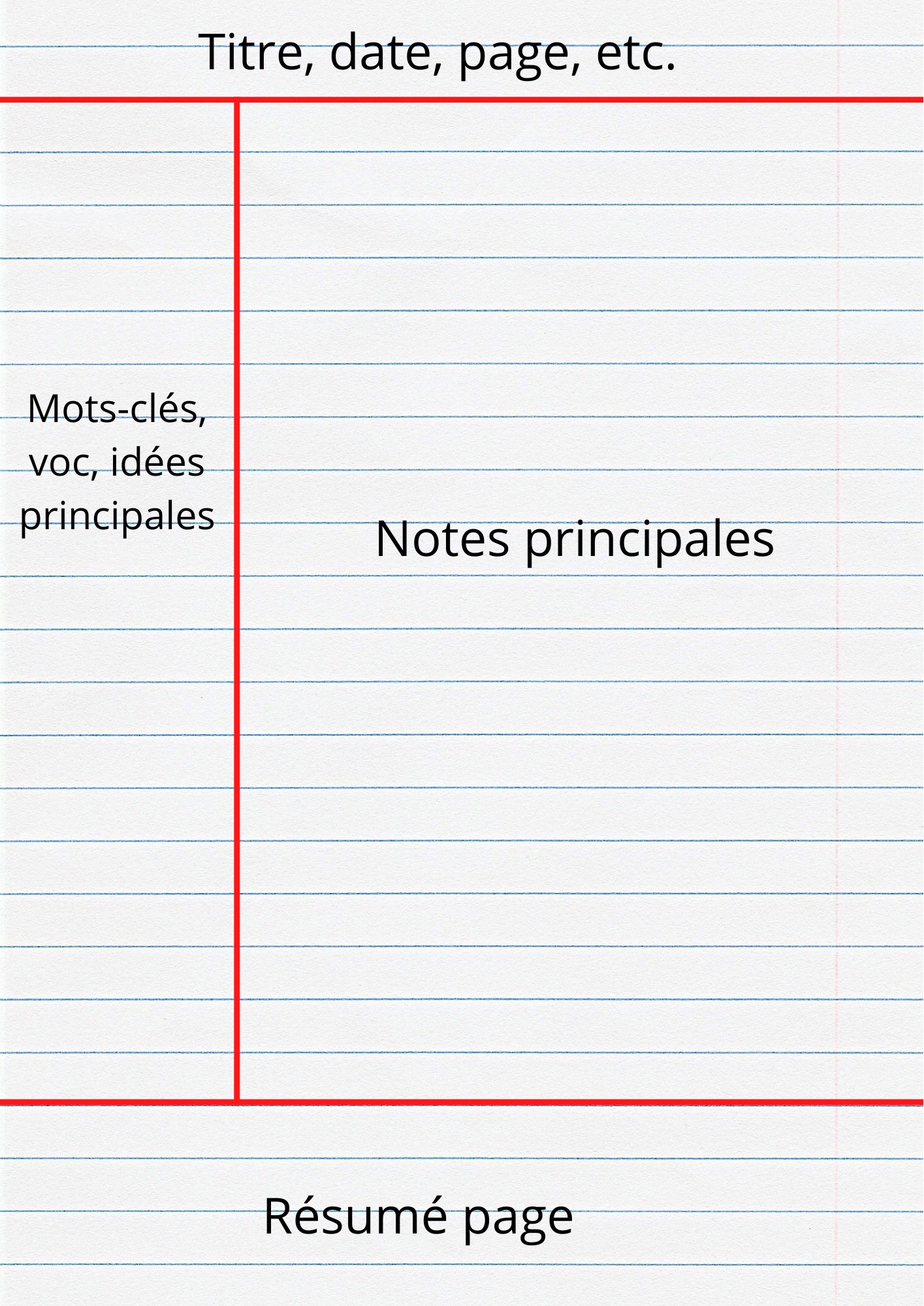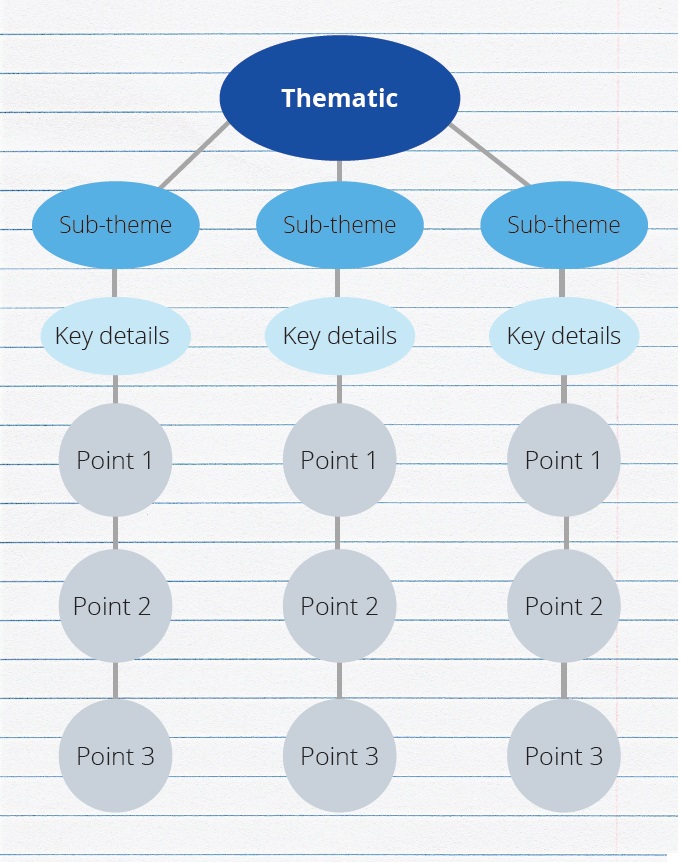Summaries
How to create effective summaries
During class, you have taken notes on the various course subjects. In preparation for exams, it may be beneficial to turn these "raw", unedited notes into summaries in order to facilitate your learning process.
The key points of an effective summary are:
- Summarize information to remove as much unnecessary detail as possible (connecting words, long sentences, etc.).
- Schematize when possible. Adding a visual aspect to your summaries will help you remember the information because you designed it yourself.
- Highlight important elements by using certain colors (e.g., blue for headings, pink for important vocabulary, etc.).
- Make connections between different parts of the lesson. Understanding the common thread of the learning is a good way to create a structured and logical summary. To do this, start by creating a table of contents, for example, to better understand the content and its structure.
- Create a lexicon of important words / technical vocabulary. If your course contains technical words specific to the subject, make a list of these words along with their definition in your summary to ensure they are all in the same place.
Once you have all this in mind, here are two techniques that can help you construct a summary.
The Cornell Method - writing to learn
The Cornell method promotes memorization through note-taking and allows lecture notes to be turned into easy-to-learn summaries. This method allows for efficient learning as all information such as main points, details, study notes, and summary appear on the same page. The structure provides easy reference and highlights the most important ideas and concepts.
How to proceed:
- Divide a sheet into four sections: a 2 cm margin at the top, a 5 cm margin on the left, a 5 cm section for the summary at the bottom. It remains the main section for notes.
- Use the top margin to record useful details such as title, date, etc.
- Use the main section to note important specific information.
- Use the left section to record key ideas. Write down what you need to remember, plus a note for each item. You can also use this section for vocabulary and study questions.Compose a summary of the notes within the bottom summary segment. This is where you will highlight the main points.
The mapping method - visualizing to learn
The "map" method of note taking is a more visual way to organize your lecture notes. This technique is useful for learning the correlation between topics.
How to proceed:
The page is organized by topics. The main topics are divided into subtopics, each of which contains detailed information.
- Start creating the map with the main theme.
- Establish a title for each of the subtopics by starting with the main topic.
- Identify important terms to remember for each subtopic.
- Continue the scheme
Choose a method that suits you
Are you more visual, auditory, or kinestetic? Experiment to find out how best to design your summaries. It's important to identify your own style in order to know how to present information in a way that will help you learn effectively.
Unifr offers
MyPLE - Managing your collection of documents
Self-study online course Digital Skills


